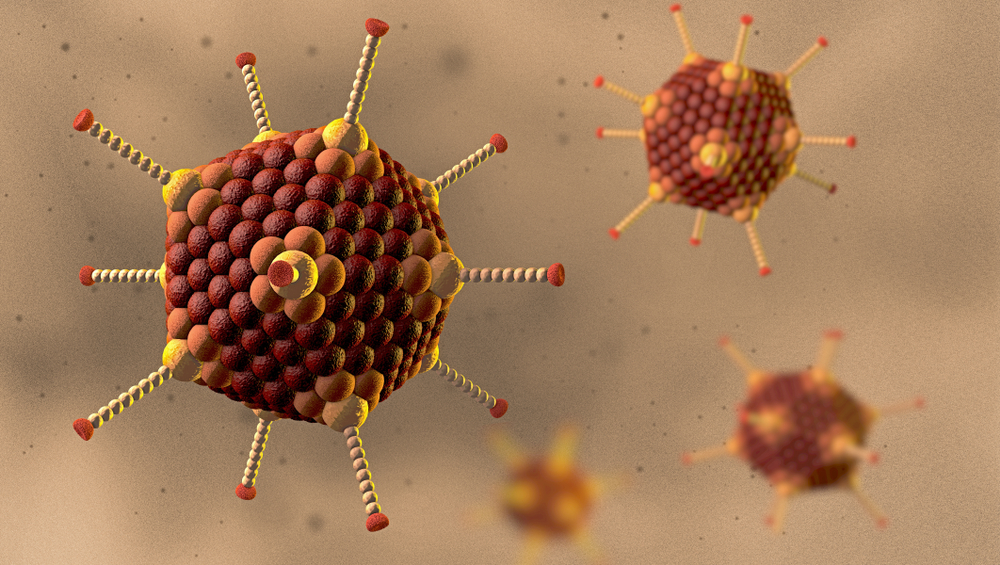ADENOVIRUS TYPE 11 PARTICLES, WILD-TYPE
This product is a concentrated source of highly-purified human Adenovirus type 11 particles (wild-type) from a lysate of optimally-infected HEK293 cells. Following double CsCl gradient purification with DNase treatment and dialysis, our Ad11 preparation is of very high quality, with minimal lot-to-lot variation. This product has been referenced by Thoma, 2013 and Dyer, 2017.
PRODUCT DETAILS – ADENOVIRUS TYPE 11 PARTICLES, WILD-TYPE
- Wild-type Adenovirus Type 11 particles.
- Double CsCl gradient purification with DNase treatment and dialysis.
- Produced in HEK293 cells and stored in pH 7.8 PBS buffer.
BACKGROUND
Adenoviruses are medium-sized (80–100 nm), non-enveloped viruses. They have an icosahedral nucleocapsid containing a linear, double-stranded DNA genome of approximately 36 kb (Nermut, 1984). The viral genome is grouped into different transcriptional units, designated early (E1, E2, E3, E4), intermediate, and late. The E1 gene is essential for activation of other viral genes and for viral replication. Deletion of the E1 gene results in viruses that are replication incompetent in normal cells. However, replication-competent viral particles can be produced from E1-deleted viral vectors by providing the E1 gene in trans. The E3 gene is nonessential for either viral replication or infection (Flint, 1999).
Adenovirus type 11 (Ad11) is associated with respiratory tract infections and conjunctivitis. It belongs to the B group of adenoviruses (along with Ad3), which use a different host cell receptor to Ad5 (Ad5 belongs to group C). Ad11 uses CD46 (and other receptors), whereas Ad5 binds the Coxsackie and adenovirus receptor (CAR). CAR expression is often down-regulated in human tumors, making Ad5-mediated gene transfer problematic. This has resulted in the development of chimeric Ad5/Ad11 vectors for improved oncolytic gene therapy.
REFERENCES
- Flint, J., 1999. Organization of the adenoviral genome. In: P. Seth, ed. Adenoviruses: Basic Biology to Gene Therapy. Austin, TX, USA: R.G. Landes Company, pp. 17-30.
- Nermut, M. V., 1984. The Architecture of Adenoviruses. In: . (eds) . In: H. S. Ginsberg, ed. The Adenoviruses. The Viruses. Boston, MA: Springer.
- Thoma, C. et al. 2013. Adenovirus Serotype 11 Causes Less Long-Term Intraperitoneal Inflammation than Serotype 5: Implications for Ovarian Cancer Therapy. Virology, 74-83. Elsevier.
- Dyer, A. et al. 2017. Oncolytic Group B Adenovirus Enadenotucirev Mediates Non-apoptotic Cell Death with Membrane Disruption and Release of Inflammatory Mediators. Mol Ther Oncolytics, 18-30. Elsevier.
This material is intended for research purposes only, NOT FOR HUMAN USE. Handle material as a category 2 pathogen using category 2 facilities and procedures.

